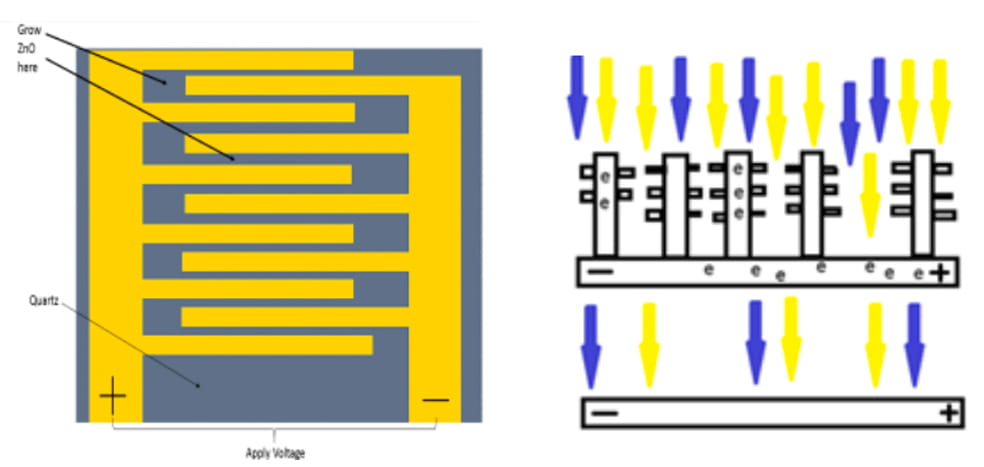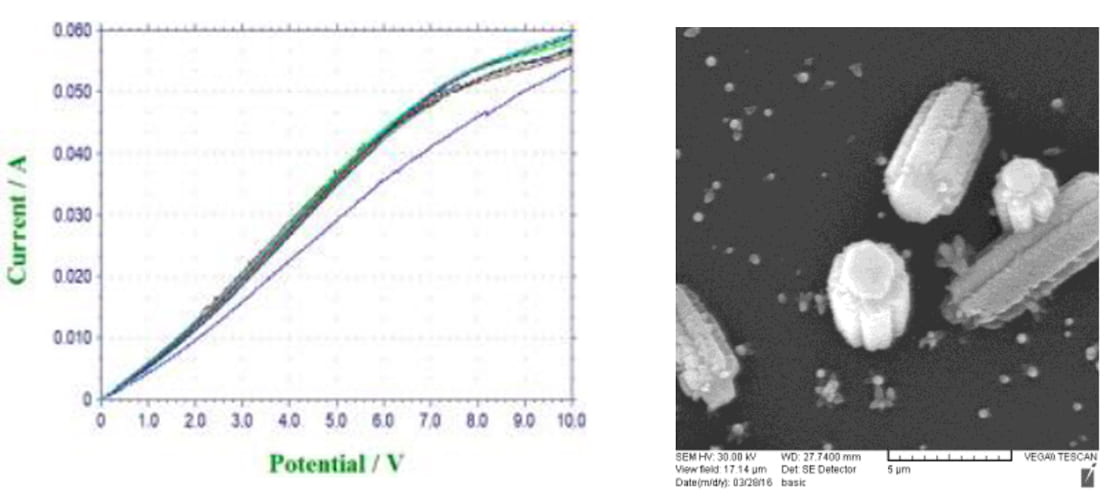Optical and Electrical Characterization of Zinc Oxide Branched Nanostructures
Student: Garrett Torix
Degree: M.S., December 2016
Major Professor: Dr. Ryan Tian
Research Area(s):
Nanoscience & Engineering
Photonics
Background/Relevance
- Zinc oxide (ZnO) nanostructures are widely used because of their ease of synthesis, cheapness, non-toxicity, and wide band gap, which allows high temperature operation.
- Absorbs UV radiation, thus can be used as material in devices such as: solar cells, photodetectors, and UV communicators.
Innovation
- Use ZnO nanostructured photodetector to absorb incoming UV light, making for more efficient UV absorbing/sensing devices.
- Utilize different nanostructures to determine best fit.
Approach
- Grow ZnO structures between gold electrodes to make novel photodetector, and apply a voltage between electrodes.
- With incident UV light on the surface, the ZnO becomes conductive and we can measure a current.
- Insert a solar cell behind photodetector to measure amount of light that passes through during voltage application.
- Measure photocurrent and solar cell voltage to determine best conditions for UV absorbing/sensing.

Key Results
- ZnO photocurrent is dependent on applied voltage, light intensity, time between voltage sweeps, temp, and atmosphere and indicates controllable variation in O2 vacancy states on ZnO surface.
- Solar cell voltage decreases during application of bias voltage indicating absorption of UV light.
- This change in transmitted light is affected by sample surface voltage, sweep rate, temp, and many other factors.

Conclusions
- There are many factors that alter the sample photocurrent and produce a change in the solar cell voltage/current.
- One such factor being that time between bias sweeps allows for more current to pass through the ZnO; suggests time dependent resistance factors.
Future Work
- Compare these nanostructures to others such as ZnO thin film, single rod array, etc.
- Optimize UV absorption, design, and construct high quality UV sensing device.
